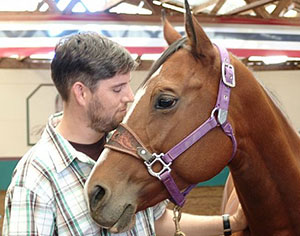Did My Dog Have A Stroke? (Idiopathic Vestibular Disease)
Share This Everywhere!
 Get More Pet Tips
Get More Pet Tips
Content provided Pet Talk with Dr. B is meant for educational purposes on health care and medical issues that may affect pets and should never be used to replace professional veterinary care from a licensed veterinarian. This site and its services do not constitute the practice of any veterinary medical health care advice, diagnosis or treatment.
Did My Dog Have A Stroke? (Idiopathic Vestibular Disease)
The vestibular system is the neurological equipment responsible for perceiving the body’s orientation relative to earth. It is responsible for maintaining posture, balance of the head and trunk, and the position of the eyes in relation to head movement. The vestibular system can be divided into central and peripheral components. Central vestibular structures are located within the brainstem and cerebellum. Peripheral vestibular structures involve the nerves related to receptors in the inner ear. Idiopathic vestibular disease involves the peripheral vestibular system.
Idiopathic means that the cause of the condition is unknown. Dogs with acute idiopathic vestibular disease are often older than 7 years of age; hence, the disease is sometimes referred to as “old dog vestibular disease.” Feline idiopathic vestibular disease most often occurs in late July and August in the northeastern part of North America, and for unknown reasons tends to affect male outdoor cats more often.
Clinical signs of vestibular disease often occur quickly. Animals will often have a head tilt due to the loss of antigravity muscle tone on one side of the neck. The head will tilt toward the side of the problem. Animals can also have a nystagmus, which is an abnormal eye movement from side to side. The eye movement will include a rapid phase,which will often be away from the side of the problem. Other clinical signs that may occur include falling (often toward the side of the lesion), gait disturbance, circling and motion sickness.
Other causes of vestibular problems include inner ear infections and brain lesions. Inner ear infections also involve the peripheral vestibular system and can cause clinical signs similar to idiopathic vestibular disease. Animals with vestibular disease typically have a history of chronic ear infections and must have their ear drums examined for any evidence of possible infection. Brain lesions involve the central vestibular system. Central vestibular problems can be differentiated from peripheral problems based on cranial nerve abnormalities of the opposite side, or a nystagmus that is vertical or only present when the head is placed in certain positions.
The prognosis for idiopathic vestibular disease is excellent and the improvement of clinical signs usually occurs within 72 hours. Animals usually return to normal within 10-14 days, but some may continue to have a head tilt long term. Treatment usually involves supportive care, including preventing motion sickness, and an idiopathic vestibular disorder will rarely reoccur.



